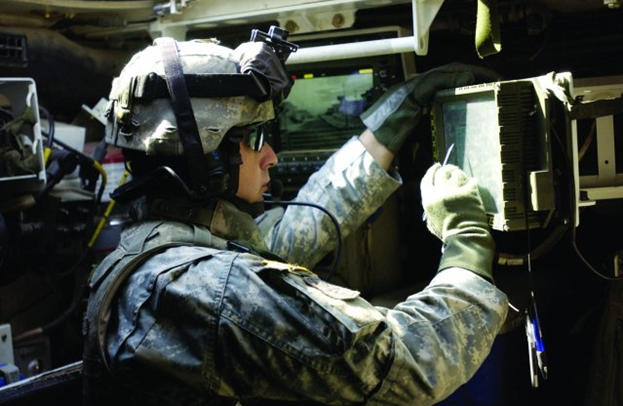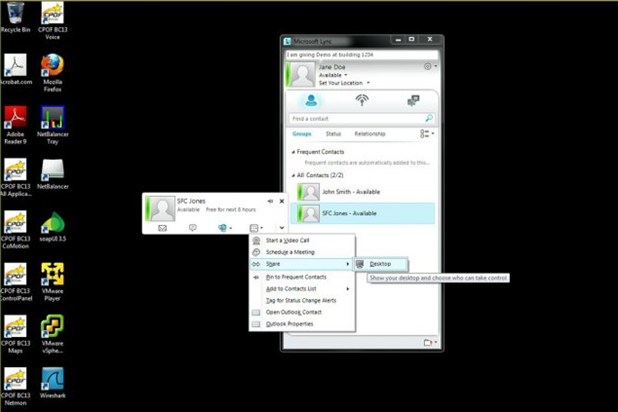US Army Can Keep Soldiers on Front Lines Connected with Lync
Today I wanted to bring your attention to an article the U.S. Army wrote about its Lync pilot. I was excited to learn how the Army believes Lync can benefit its personnel, and I think you’ll find it interesting as well. At the Command and Control Directorate for the U.S. Army’s Communications-Electronics Research, Development and Engineering Center (CERDEC CD2), a development effort is underway to understand how the Army can use Lync to extend its communication infrastructure to keep soldiers connected to each other, whether they are at the command post or on patrol.
Instant communication is critical to soldiers on the front lines. In fact, soldiers rate instant messaging applications as the most important application they use. Adverse conditions, a wide variety of communications equipment, mobile personnel, and bandwidth constraints make communications difficult. Instant messaging helps the army overcome these challenges. Here’ s how:
- CERDEC integrated presence information into several military systems. Through presence icons, soldiers can see multiple modalities to contact someone, whether by voice or instant messaging. “I was impressed with the work CERDEC C2D has done integrating Lync with our existing Army mission command systems, and I see great potential in a system that can operate at the tactical edge, in the lowest bandwidth environment,” said retired Lt. Col Jeffrey From, science and technology specialist at the Mission Command Battle Lab at Fort Leavenworth, Kan. Where bandwidth is available, soldiers can also use Lync to send files or share images through desktop sharing. It’s great to see that Lync has the flexibility to meet the needs of such a unique customer.

Soldiers can view presence and initiate chat sessions through a number of military applications integrated with Lync
- Lync can be used to bridge communication devices. CERDEC configured Lync so that users can easily communicate with people using Single Channel Ground and Airborne Radio System radios, cell phones, or VoIP phones. “If a general is on a phone or a (computer) and needs to communicate, you could actually bridge that with a mobile radio unit and have that connection be seamless,” said Phil West, a principal technologist with Microsoft. This is really amazing to me: Soldiers don’t have to know where someone is or what types of devices are involved on the other end. The message still gets through. It really is instant communications because you just click on someone’s name and start communicating.

Users can easily view presence and initiate a chat, voice call, or video conference through the Lync client
- The CERDEC C2D team sees the potential to use Lync federation to enable communication with NATO forces or other branches of the military. “[Lync] enables faster collaboration with coalition partners because we don’t have to worry about the information assurance implications of releasing commercial off-the-shelf software to foreign groups,” says Ron Szymanski, CERDEC C2D Chief Architect for Science and Technology.

Users can use Lync video conferencing and desktop sharing for tactical discussions
- On a more practical note, the Army can take advantage of the interoperation between Lync and other Microsoft products--Microsoft Office, Microsoft Exchange, and Microsoft SharePoint Server--that are integral to its daily operations around the world. “Lync can ultimately improve organizational efficiencies across a broad spectrum of environments,” said Brett Burland, chief of the Science and Technology branch at the Mission Command Battle Lab. “It could be used in our more stable installation environment, and through the improvements CERDEC C2D has developed, it can function just as well in a deployed, tactical force.”
I think it’s also great to know that Lync had been approved by the Defense Information Systems Agency and the US Army feels it can use Lync to solve so many of its communications challenges. I like that the Army is using the most basic functions of Lync—instant messaging and presence—to keep soldiers in the field connected, but it also sees the potential of flexible Lync APIs to customize solutions that truly support its operations.
Kind regards,
Rainer Podjoutomo
Product Manager, Microsoft Lync